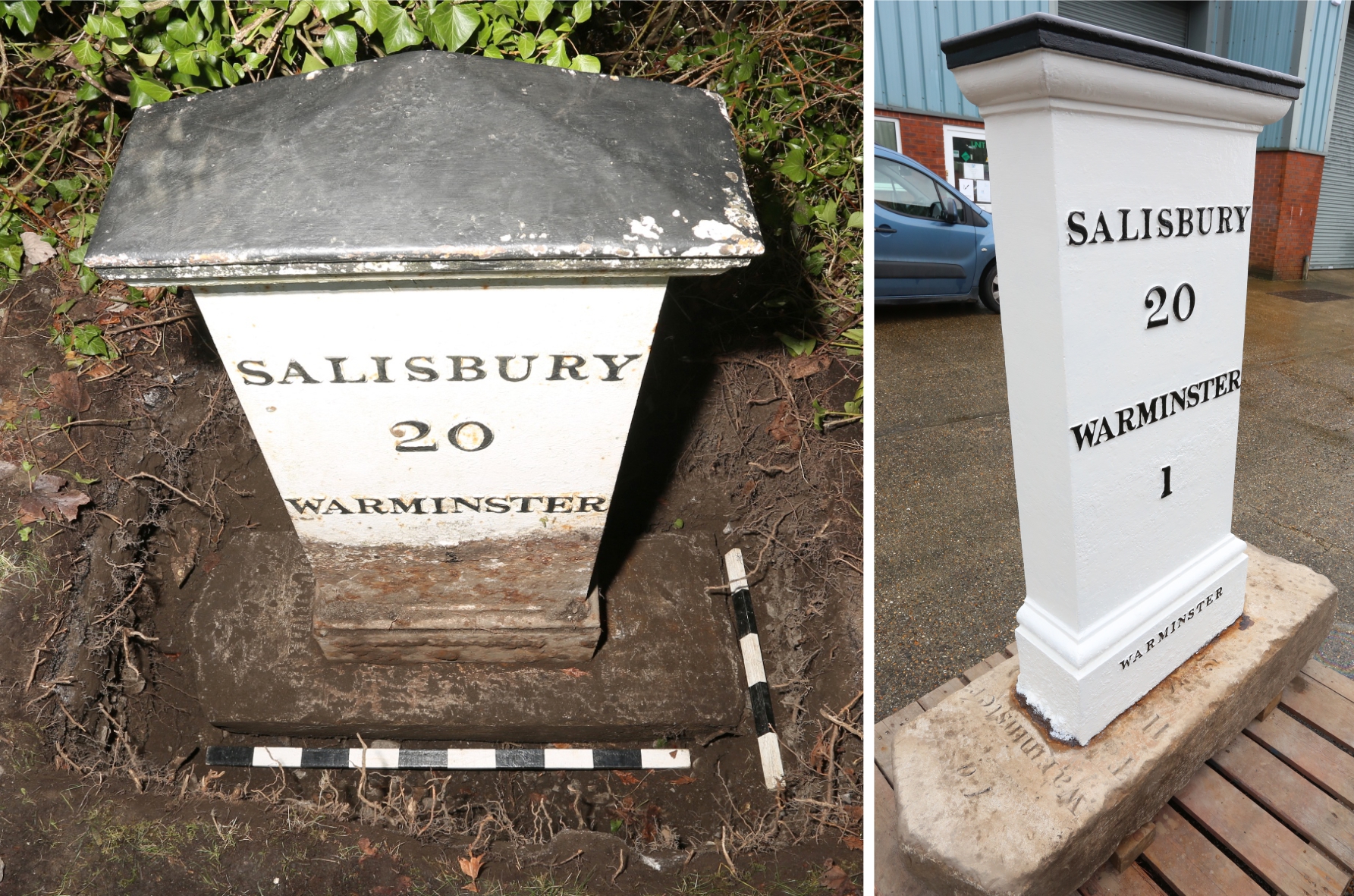
Wessex Archaeology has recently been involved with the conservation and refurbishment of a Grade II listed milepost which was commissioned by HPH Ltd. The milepost was located on the south side of Boreham Road, Warminster, Wiltshire. Listed building consent was granted for the restoration and relocation of the milepost with the new location in a prominent position approximately 30m further to the east.
The cast iron milepost, which was erected circa 1840, reads:
SALISBURY 20, WARMINSTER 1
In addition, it has ‘WARMINSTER’ (the parish name) inscribed in smaller lettering across the plinth, although over time it appears that the ground surface had risen up so that the lower lettering and ‘1’ mile distance to Warminster had become buried.
The milepost was manufactured by Carson and Miller, who ran the Wiltshire Foundry based in East Street, Warminster. Over forty similar mileposts, many of them stamped ‘C & M W 1840’, can still be seen on roads radiating out from Warminster as well as other examples in Wiltshire, north Dorset and east Somerset. In addition to mileposts, Carson and Miller were well known for producing numerous agricultural implements, many of which were exported to places such as New Zealand, France and Germany.
An unexpected discovery during the excavation and removal was that the cast iron milepost was set into an earlier, 18th/early 19th century milestone beneath it. This milestone is inscribed:
To Warminster Town Hall Half a Mile, Sarum 20 Miles
Due to the discrepancy in terms of its distance to the town hall, it seems likely that the earlier milestone has been relocated from its original position and simply used as a useful base for the later cast iron milepost. A milestone measuring approximately half a mile from the town hall is depicted on Andrews’ and Dury’s 1773 Map of Wiltshire and this appears to show the earlier stone’s original location.
Throughout the project, Wessex Archaeology was closely involved with members of the Milestone Society who have labelled it a ‘possibly unique’ example due to the use of an earlier milestone as a later base. The excavation and reinstatement work was carefully carried out by local builders R Moulding & Co under close supervision by Wessex Archaeology staff.
Once in our Salisbury workshop, specialist conservation and refurbishment works were carried out by our ICON accredited conservator Lynn Wootten and her team. This involved cleaning, treating the rust and repainting the milestone. A 3D photo model, which involved taking hundreds of digital images of the joined milepost and milestone, was created so that future researchers can closely examine both items following its reinstatement.
The relocation and conservation of the milepost has ensured that it is preserved for many years to come with the full height of the milepost revealed and the added benefit that it is now more visible in its new location. In addition, the removal of the milestone has provided useful information for the Milestone Society perhaps indicating that several other earlier milestones may have been taken up and re-used as bases for later mileposts.